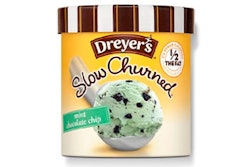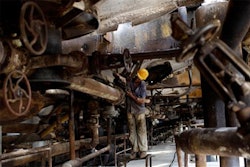Powder blending is a critical process within many pharmaceutical product manufacturing areas. The requirements for blend and content uniformity have been provided in numerous regulations and guidance documents [1]. Blending and powder transfer operations have been the focus of many efforts to understand the parameters that affect the outcome and demonstrate performance. The vast majority of these processes are batch based, where the required quantities of each ingredient are added within a process vessel, which delivers a resulting fixed mass of blended material at the conclusion of its operating cycle. There have been recent efforts to develop continuous blending processes, which would rely on the behavior of powder feed systems and the blending apparatus itself to act in a controllable manner, delivering finished powder at a mass per unit time basis. These types of processes have been used for many years in such industries as foods, chemicals and pet care products. Continuous blending processes could alleviate some of the inefficiencies associated with batch handling, but process design would become much more important. Although the regulatory implications are an additional consideration, evaluating the requirements and performance of these systems for pharmaceutical production is essentially the same as in other industries.
Blending Mechanisms
Regardless of the equipment type, all powder blending operations involve, to various extents, three fundamental blending mechanisms, being convection, diffusion and shear. Convection involves the gross movement of particles throughout the blender, either by a force action from a paddle or by gentle tumbling under rotational effects. Diffusion is the intermingling of individual particles at the small scale, and tends to be the slowest to occur and will generally pace the performance of a blender, particularly when smaller dose sizes are considered. Lastly, the shear mechanism involves the thorough incorporation of material passing along forced slip planes in a blender. Different types of blenders will tend to rely on some of these mechanisms more than others, and ultimately the need for each will be based on the properties of the powders being blended, along with the level of uniformity desired.
System Design
The concept for continuous blending involves adding raw materials into one end of a processing unit, which are blended as they are conveyed to the outlet at the far end. Blending behavior becomes a function of how much interaction takes place relative to the advancement of the forming blend. With respect to the fundamental mechanisms given in the previous section, convection will occur in parallel to the primary flow of material through the blender, while diffusion will occur perpendicular to this movement. Shear forces can be added to break up agglomerates and disperse particles.
Continuous blending systems tend to fall into two broad categories: drum type systems, where an outer housing is rotated, and screw or paddle systems, where an inner shaft is rotated. The rotational action of both of these systems provides the primary blending mechanism as well as the motive force for conveying powder through the system. Features in each can be added or tailored to enhance blending, such as baffles and segmented screw flights (see Figure 1). The rotational speed and blender inclination (if used) will have a strong influence on powder velocity through the system, while the overall size (cross section) and length will set capacity and residence time. There will be some interaction between these features as well [2].
Figure 1: Continuous blending screw interior
The selection of the type of system to be used, as well as the various features within it, should be based on the application. Convection will help smooth out input variations, while shear and diffusion will provide an intimate mix. Drum type systems will tend to rely more on convection and diffusion, whereas screw type systems will rely more on shear and diffusion. Hence, if one or more of the components in the blend is prone to agglomeration, a screw system may be preferred due to its ability to provide more shear. With the number of parameters that can be varied, there are opportunities to optimize a system and provide the desired performance, assuming it is a good fit from an overall perspective to begin with. One of the most critical aspects of the system is the design of the ingredient feeders.
References
1. Product Quality Research Institute (PQRI) Blend Uniformity Working Group (BUWG), The Use of Stratified Sampling of Blend Dosage Units to Demonstrate Adequacy of Mix for Powder Blends, PDA Journal of Pharmaceutical Science and Technology, March/April 2003, Vol. 57, No. 2, pp. 64-74.
2. Clement, S. A. and Prescott, J. K., Blending, Segregation, and Sampling, Encapsulated and Powdered Foods, Food Sciences and Technology Series Vol. 146, 2005.
3. Prescott, J. K. and Hossfeld, R. J., Maintaining product uniformity and uninterrupted flow to direct compression tablet presses. Pharmaceutical Technology, June 1994, pp. 99-114.
4. Barnum R.A., Ebb and Flow – Understanding Powder Flow Behavior, Pharmaceutical Processing, March 2009, pp. 18-21.
5. The PQRI BUWG (includes Prescott, J. K.): The Use of Stratified Sampling of Blend Dosage Units to Demonstrate Adequacy of Mix for Powder Blends, PDA Journal of Pharmaceutical Science and Technology, March/April 2003, Vol. 57, No. 2, pp. 64-74.
Please tune into tomorrow’s Chemical Equipment Daily for part two of this two-part series. For more information, please visit www.jenike.com.























